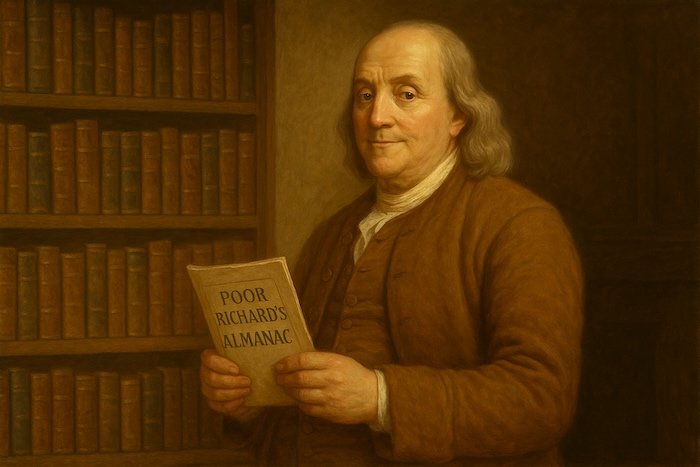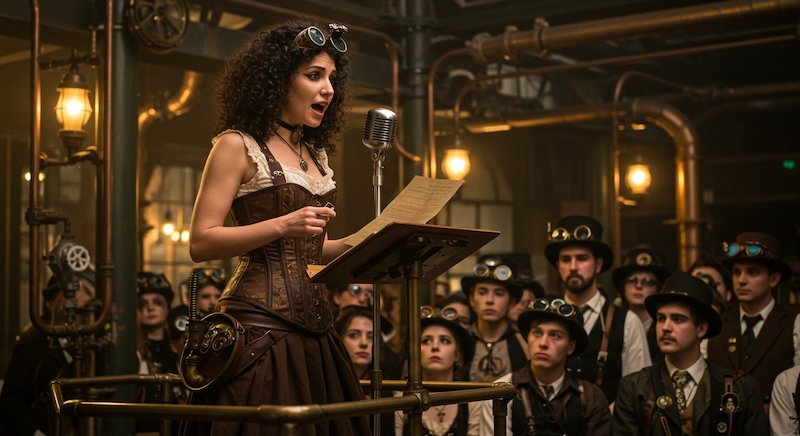Alexis Barton realizes that nothing good happens after 2 AM – Live at The Moth
Personal stories don’t have to be extraordinary or sensational to have impact. They can just as easily be what I think of as everyday profound. On one level, they’re simple tales from life, but under the surface there’s a deeper meaning. Often a realization of some kind or an aha moment. And when there’s a funny thread running through your narrative, all the better. Alexis Barton’s story told at The Moth is a prime example of storytelling that I call humor with heart.

Most love stories end with a white dress. Mine begins with one.
While her story is unique, many of us have been in relationships that could have become long lasting, but over time they faded away, and in the end, we realized it was for the best. And that’s a factor to consider when crafting your own story. Think about what makes your story different, all yours, and how the theme can connect to a broad audience?
The fact that Quinton already had a girlfriend, that was just a poetic obstacle that I had to overcome.
What became evident to me while listening to Alexis’ story was her mastery of language and humor. Consider her use of the phrase poetic obstacle and the word situationship. This is difficult for most storytellers to pull off unless they happen to be a professional writer, which she reveals at the end. That said, I invite you to try your hand at crafting a unique phrase or novel hybrid word.
Notice the early hints she offers as to her background and style with mention of “Southern girls love bows”, and “Southern girls love hair ribbons”. On their own, they provide the audience with a sense of how she looks, but they also serve as a bit of foreshadowing when she later says, “I’m Sandra Dee in my little ponytail and hair ribbon.” It’s a clever callback, taking us from the general to the specific.
I also appreciated the way in which she compared herself to her quasi-boyfriend and his date when they all crossed paths in Walmart at 2am. Rather than saying “they were obviously together” and “I was obviously alone”, she refers to the fact that, “they had couple snacks…and I had single-girl food”. While either approach works, the former is simply stating a fact, while her word choice connects to the audience in a common way, as we’ve all been shopping and noticed what was in someone else’s shopping cart.
Transcript
Most love stories end with a white dress. Mine begins with one. The white dress I wore for my high school graduation was above the knee and chic, backless, and it had a sweet little bow at the back because Southern girls love bows.
And when I wore it to my graduation, I had no idea that it might serve a second purpose as a wedding dress, or more accurately, a dress to elope in.
But about two and a half years later, I was a college student at UAB, and I was, “Go Blazers!” I was dangerously in love with an upperclassman who lived two floors above me in the dorm, and we’ll call him Quinton.
Quinton was gorgeous. Every girl on campus wanted Quinton. But he wanted me. The fact that Quinton already had a girlfriend, that was just a poetic obstacle that I had to overcome. And I did.
Quinton and I sealed our “situationship” with a kiss under a streetlight in the rain, and it was the most romantic thing that had ever happened to me.
Now, we didn’t actually go out; we sofa-sat. That’s what you did before Netflix and chill. And we talked about all kinds of things and eventually the talk turned to marriage. Now, between us, we had one job, and both of us were still on our parents’ health insurance, and so this seemed like a fantastic idea. And we didn’t want to burden our parents with paying for a wedding, so we thought, we’ll cut class, like the scholars we were, and run down to Jefferson County and elope. And I already had the perfect dress in my closet at home, so I snuck home to Bruton, Alabama, and grabbed my high school dress and snuck it back.
Now, we chickened out. We didn’t actually elope. The day came and went and I just couldn’t do it and he couldn’t either. And we were all right with that. We continued to see each other and we were happy. And, uh, one night when we weren’t sofa-sitting, I went to Walmart with my roommate at 2 AM. As one does. That’s the perfect time to go to Walmart. It’s the witching hour, like going to Waffle House at the same hour. And as one does, we were wearing what most people are wearing at 2 AM—pajamas.
I had on a matching pastel kind of top and bottom with a little Peter Pan collar and white Keds, and I had a ponytail and I had a hair ribbon because Southern girls love hair ribbons. And we went down to Walmart on Lakeshore. And we were going to get some snacks. And, uh, we went all over the store, and we got chips and dip and Coke and Lean Cuisine and Crystal Light. And we made our way to the frozen food aisle because we needed ice cream. And if you’ve been in that Walmart, you know how wide and long that aisle is.
And so we are on the Blue Bell end, because I’m a Blue Bell girl. And we are looking at the options. And at the other end, the opposite end of the aisle, there is a couple coming toward us. And I’m severely nearsighted, so I can only really see y’all. I can’t see what’s happening at the back. And so we’re making our way down, India, my roommate, and I. And the couple at the opposite end is slowly coming toward us. And the closer they come to us, I realize it’s Quinton. And he’s on a date. And the girl was cute. She had on her going-out top. And if you know what I mean by that. Uh, she had on some cute jeans and some cute shoes and her hair and makeup was flawless. And look at me. I’m Sandra Dee in my little ponytail and hair ribbon.
And I took it all in as they walked past me. And I looked in their buggy and they had couple snacks. They had chocolate-covered Oreos. They had strawberries. They had wine. They had cubed cheese and olives. And it was obvious that they were together. Mind you, he had never taken me out. And I had single-girl food in my buggy. I had Lean Cuisine and Crystal Light. And I realized then that I was a single woman and I had had no clue all along. And we kept moving, we never broke stride. We get to the end of the aisle and I ask India, “Did I see what I thought I saw?” And I was hoping she would say no, but she’s not that type of person. She said, “Yeah, girl, you saw it. Everybody saw it in Walmart.” And, uh, she took me home. And this is—this is the point where I’d like to say I gathered my dignity, but I didn’t. I called another friend to pick me up, and we shot out for his house. Because it was his term to face uncomfortable truths at an inconvenient time in front of an audience—his neighbors. And I let him have it. And I realized in the moment how afraid he was of me when I popped out of the shadows, and I realized, you know, girl, this is over. And so I left.
This story has a happy ending. Two happy endings, because Quinton married that girl, and they have a beautiful family. And I lived to tell this story here tonight, so we both won. And if there are any lessons from this, and there are three that I have—it has taken me several years to come to. It is: nothing good happens after 2 AM, just like your mother said. Never double-cross a writer because you will become material. And three: always wear your cute outfit when you go out, because you never know who you’re gonna see in Walmart.
Thank you.
Back to you…
What stood out to you? At what points did you connect to her story? Especially if there was a passage that described something you’ve never experienced, but it resonated with you at a higher level.
◆
Storytelling in Three Steps
Ten Fundamental Story Blocks
The Essential Literary Elements
◆
contact me to discuss your storytelling goals.
◆
Subscribe to the newsletter for the latest updates!
Copyright Storytelling with Impact® – All rights reserved






